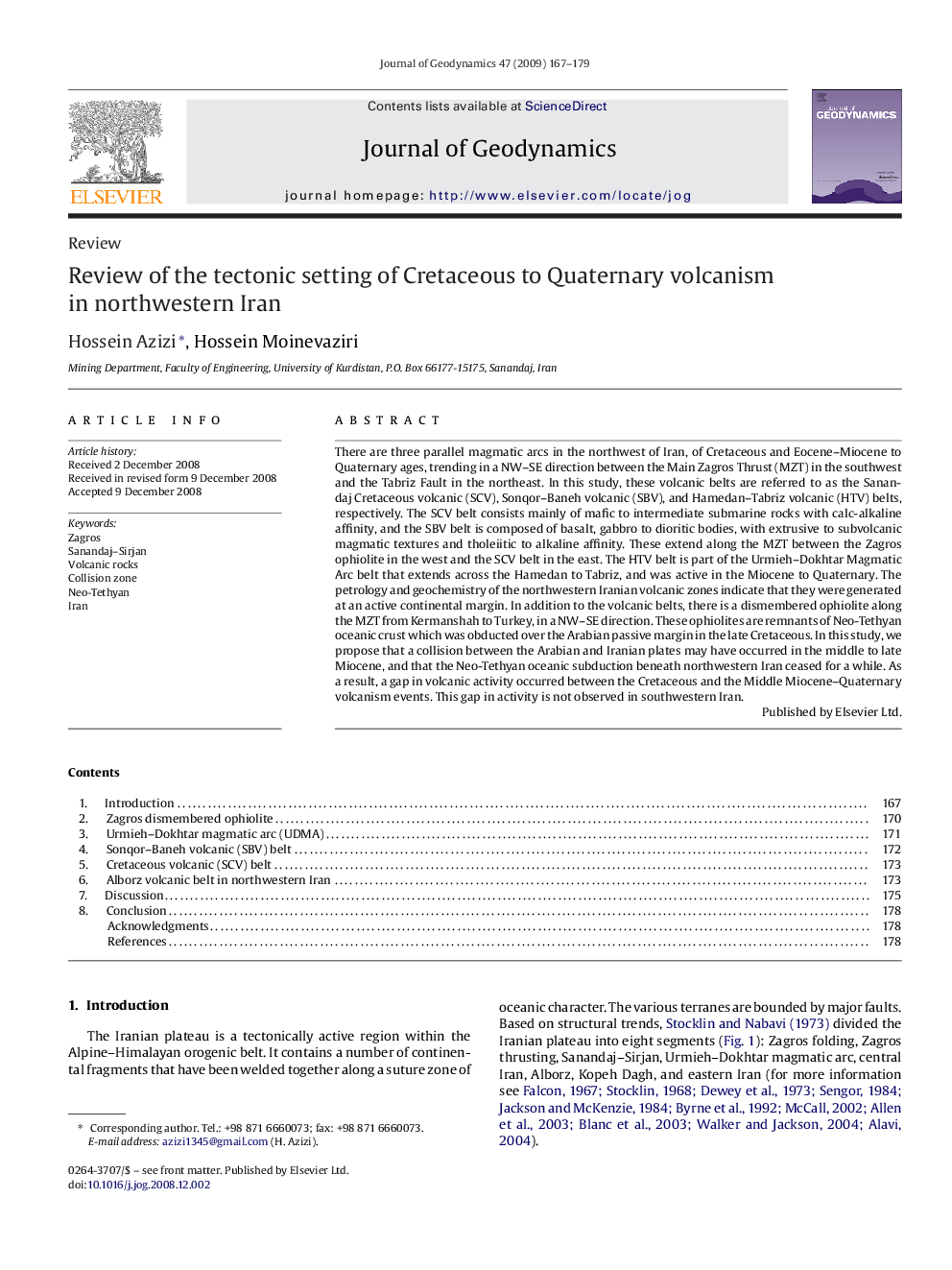| Article ID | Journal | Published Year | Pages | File Type |
|---|---|---|---|---|
| 4688714 | Journal of Geodynamics | 2009 | 13 Pages |
There are three parallel magmatic arcs in the northwest of Iran, of Cretaceous and Eocene–Miocene to Quaternary ages, trending in a NW–SE direction between the Main Zagros Thrust (MZT) in the southwest and the Tabriz Fault in the northeast. In this study, these volcanic belts are referred to as the Sanandaj Cretaceous volcanic (SCV), Sonqor–Baneh volcanic (SBV), and Hamedan–Tabriz volcanic (HTV) belts, respectively. The SCV belt consists mainly of mafic to intermediate submarine rocks with calc-alkaline affinity, and the SBV belt is composed of basalt, gabbro to dioritic bodies, with extrusive to subvolcanic magmatic textures and tholeiitic to alkaline affinity. These extend along the MZT between the Zagros ophiolite in the west and the SCV belt in the east. The HTV belt is part of the Urmieh–Dokhtar Magmatic Arc belt that extends across the Hamedan to Tabriz, and was active in the Miocene to Quaternary. The petrology and geochemistry of the northwestern Iranian volcanic zones indicate that they were generated at an active continental margin. In addition to the volcanic belts, there is a dismembered ophiolite along the MZT from Kermanshah to Turkey, in a NW–SE direction. These ophiolites are remnants of Neo-Tethyan oceanic crust which was obducted over the Arabian passive margin in the late Cretaceous. In this study, we propose that a collision between the Arabian and Iranian plates may have occurred in the middle to late Miocene, and that the Neo-Tethyan oceanic subduction beneath northwestern Iran ceased for a while. As a result, a gap in volcanic activity occurred between the Cretaceous and the Middle Miocene–Quaternary volcanism events. This gap in activity is not observed in southwestern Iran.
